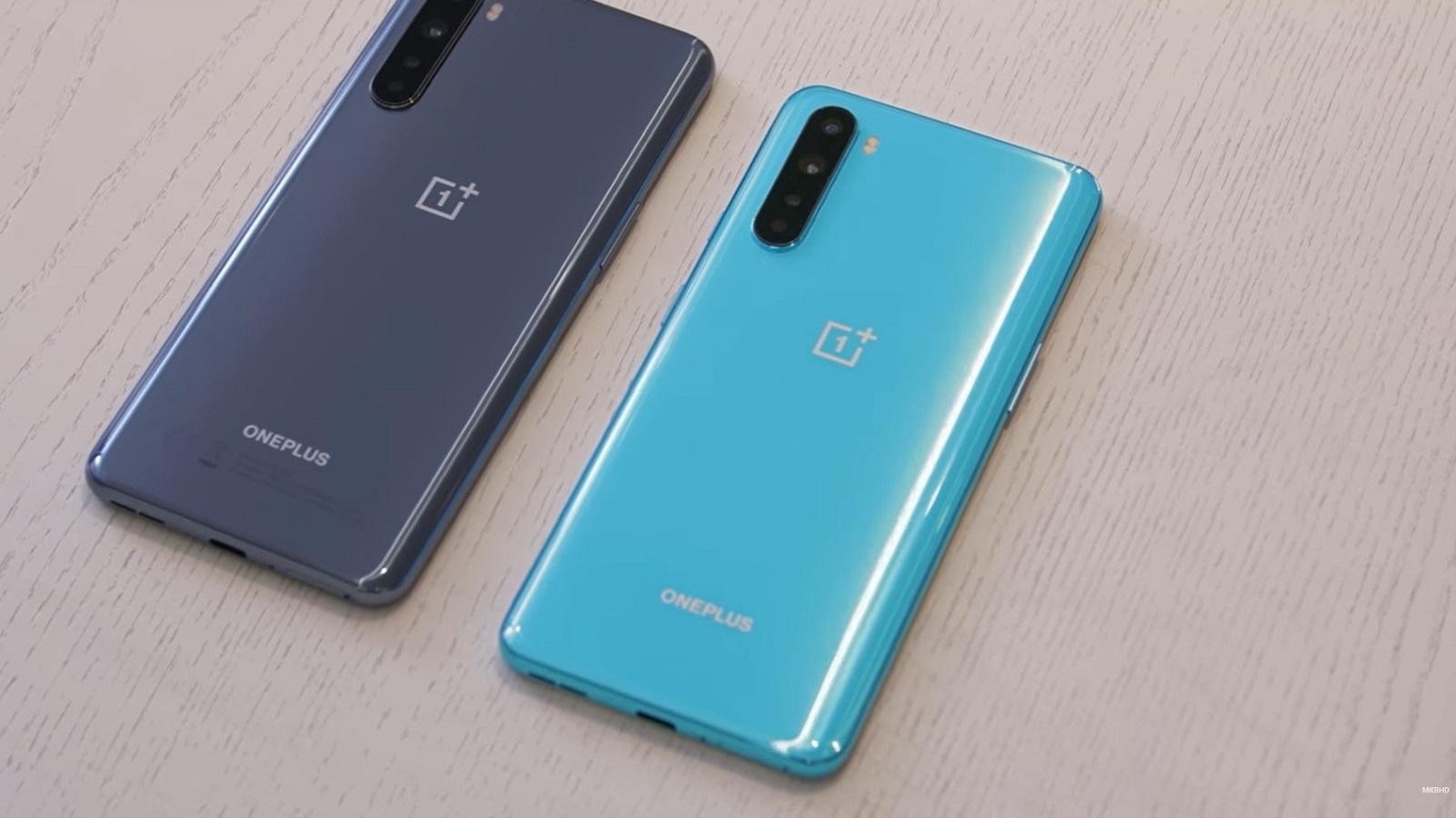This is the OnePlus Nord - plus there's even more spec unveiled
MKBHD's exclusive interview reveals the new OnePlus Nord

We’ve heard a bit about the upcoming mid-range OnePlus Nord phone – including details teased by OnePlus itself – but we haven’t seen the neww Android phone...until now.
Tech YouTuber Marques Brownlee interviewed OnePlus co-founder and director Carl Pei, who unveiled the OnePlus Nord for all to see – and it looks near to what the rumors and leaks have suggested it would. The rear camera block is indeed relocated to the top-left corner, though it’s ovoid (like the OnePlus 8 line) and, yes, looks like it packs four cameras.
You’d be doing yourself a disservice not to watch the rest of the interview, in which Brownlee peppers Pei with insightful questions about phone economics – like how much it costs to add NFC ($4 per device), IP certification ($15 plus testing machines and manpower), and a 3.5mm headphone jack (not pricey but more an issue of opportunity cost: how much space are you giving up for battery or other perks?).
The video is an overview of tradeoffs in smartphone design, especially when considering cost-cutting measures to keep mid-range phone prices down. It’s also only the highlights of the chat, with the full conversation uploaded as an episode of MKBHD’s WVFRM podcast.
- Best cheap phones: where the OnePlus Nord could end up
- iPhone SE 2020: the mid-range 2020 phone to beat
- Google Pixel 4a: the much-anticipated phone could compete with the Nord...when it comes out
OnePlus Nord: AMOLED display, 90Hz refresh rate?
Pei didn’t exactly state what new features the OnePlus Nord would be getting, but he did say that despite AMOLED displays costing twice as much as identical LCD screens and spoke to the higher failure rate in producing the curved screens seen in the company’s flagships since the OnePlus 7 Pro.
Brownlee pressed Pei about high refresh rate screens, which have graced the Pro versions of OnePlus flagships for the last year, and Pei noted their price-per-unit has gone down now that more phones have them. Given the Nord we saw in the video had a curved screen, we could infer that it’s both AMOLED and has a 90Hz refresh rate. Especially considering his closing comment:
“We spent a lot on the display of this phone to ensure the smooth scrolling,” Pei said – presumably referring to the Nord, “but we think it’s worth it.”
Get daily insight, inspiration and deals in your inbox
Sign up for breaking news, reviews, opinion, top tech deals, and more.
That’s backed up by the official OnePlus Nord instagram, which has a story telling consumers to expect a 90Hz refresh rate in the phone. Given we’ve only seen higher refresh rates in OLED displays, we’re pretty confident the Nord will pack an AMOLED display. He also confirmed that the Nord won’t be IP-certified (for cost reasons).
There’s a few other interesting nuggets in the Pei interview, including reveals of Nord prototype models that have a much less orthodox rear camera design with three lenses in a corner. That was back when the phone was considered more experimental, but along the way, the team determined consumer demand might be higher than they expected, so they changed the design late in the game (finalized at six months before launch, rather than the usual nine months). This delayed the Nord’s release by a month, Pei admitted.
Oh, and one other thing that could have been revealed: Pei has a very noticeable bright blue earbud tucked in during the interview. Could this be the OnePlus true wireless earbuds the company just confirmed will be coming out alongside the Nord on July 21? Hmm...
- Incoming soon: Apple's iPhone 12
David is now a mobile reporter at Cnet. Formerly Mobile Editor, US for TechRadar, he covered phones, tablets, and wearables. He still thinks the iPhone 4 is the best-looking smartphone ever made. He's most interested in technology, gaming and culture – and where they overlap and change our lives. His current beat explores how our on-the-go existence is affected by new gadgets, carrier coverage expansions, and corporate strategy shifts.
